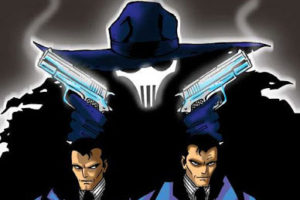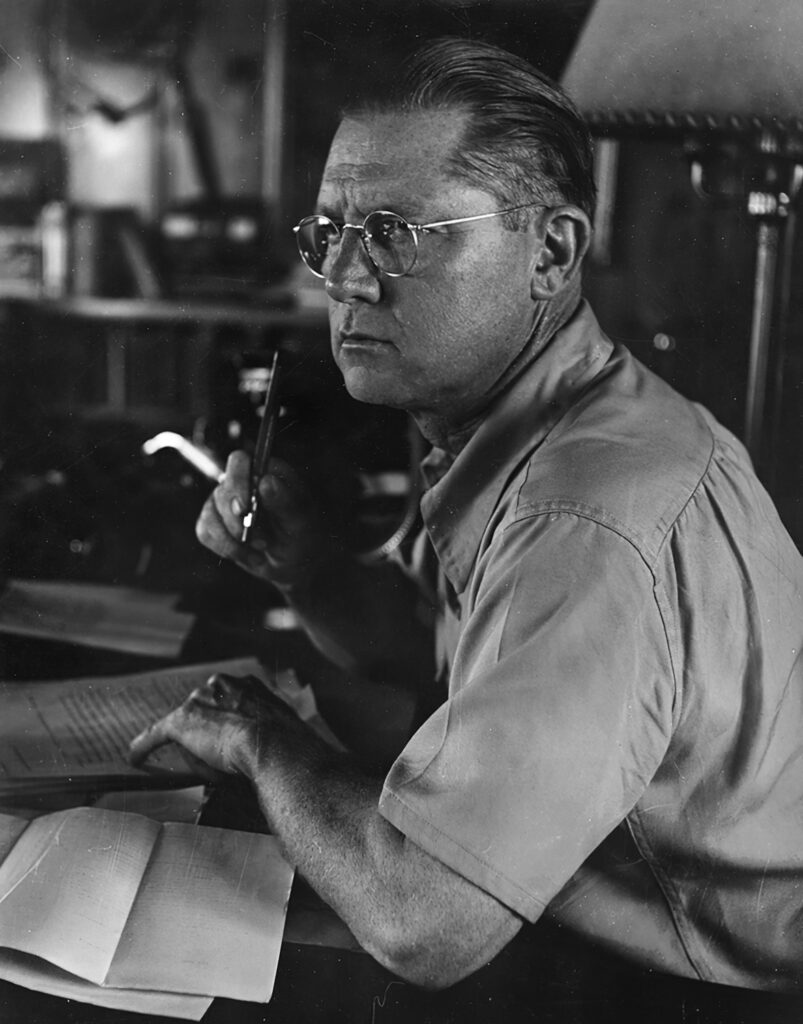
A successful fictioneer offers encouragement for would-be competitors in the pulp-magazine field.
I guess I’m what H. Bedford-Jones would call a fictioneer by this time, even though I do still keep a hand in the law business, and maintain a law office. But I’ve sold considerably over five million words of fiction within a period longer than I care to think about.
During that time I’ve seen ’em come, and I’ve seen ’em go; authors, magazines, editors, policies, styles, and rates. I’ve listened to the wail of the pessimist and the blah of the optimist. I’ve seen newcomers get their first acceptance and shoot to the front. I’ve seen old-timers who couldn’t stand the pace drop into the discard.
And I’m pounding the typewriter tonight, after a hard day’s grind at story writing, with one single thing in mind — to encourage the fellow who’s toiling along the path of his first acceptance, or from his first few acceptances to a steady income from fiction writing.
There’s been so much pessimism going the rounds among the professionals that most of the beginners have got the buck ague. And don’t forget one thing — a man’s mental temperament shows in his work. You can’t write a story in the dull depths of cold despair and have any sparkling spontaneity in that story. You let these fellows take your ambition into a cold shower bath and keep it there until it’s got goose pimples all over its skin, and then expect it to perform for you, and you’re expecting the utterly impossible.
Just to prove the point.
Editor’s note
This article originally appeared in The Author & Journalist (October 1932).
How many times do you hear a man say: “I tried and tried to sell, and all I got was rejection slips. Then I got a personal letter from an editor, and then a check. After that, I started to sell regularly.”
Okay. Why?
Simply because he managed to get by with one exceptionally well-written story, and that first check scattered a whole bunch of inhibitions. He knew he could sell.
A while back I wrote an introduction to that book of H. Bedford-Jones’s The Graduate Fictioneer. Harry got me to write the introduction before he’d written all of the book. Then he had the last word by going along throughout the book and contradicting the assertions in the introduction.
Among others, he contradicted a statement that the turning point in the life of a fictioneer was when he received his first check. Harry said it was only when he had developed sufficient proficiency to know that he could turn out a consistently salable story.
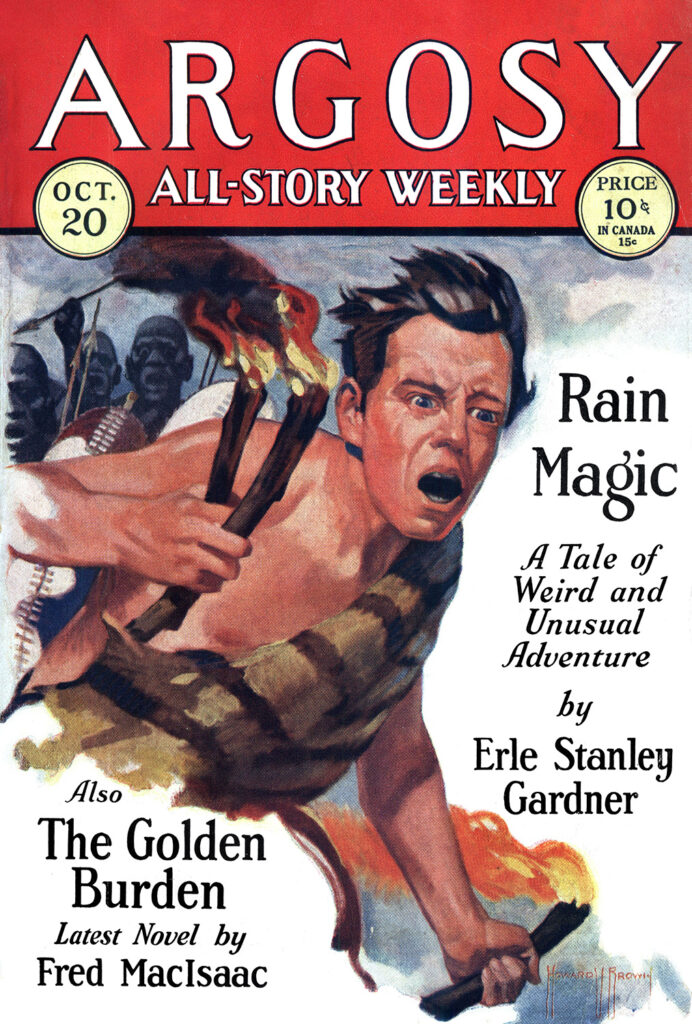 Shucks, H.B.-J.! That’s when he’s arrived! I was talking about a turning point. It’s when he gets that first check. It gives him confidence in himself.
Shucks, H.B.-J.! That’s when he’s arrived! I was talking about a turning point. It’s when he gets that first check. It gives him confidence in himself.
Let’s get down to cases — my own case for instance.
When I started in to write I didn’t know the first thing about writing. I didn’t have any natural talent as a writer. I didn’t feel any call to elevate literature.
I was a lawyer, more busy with the law business than I liked to be, chained down to an office and a courtroom, getting to think in arbitrary technicalities. Lots of people thought I was a pretty good trial lawyer. They thronged the office and brought in more business than I could handle during office hours. I was working nights, and I was undermining my health.
So I decided I wanted to vacation some. I wanted to get out more and see the world. How could I do it? Obviously by saving money, which was something that never appealed to me very much, or by getting some source of income that could be carried around with me, building a business that was independent of offices.
So I announced to my close friends that I’d decided to become a writer.
I can still remember the smiles that greeted that remark.
Things were different in those days. In some ways, it was harder to break in than it is now, and in some ways, it was easier. In the first place, there wasn’t as much competition. To offset that, there weren’t as many magazines. And there weren’t any writers’ magazines of general circulation, no professional critics who were generally known to aspiring beginners. And rates were low.
I was living in a small city, three thousand miles away from my markets. I didn’t know any writers, or even any aspiring writers. I didn’t know any editors. I didn’t know a darned thing about the mechanics of story construction, and I didn’t know where to go to find out.
But I’d had this much in my favor. I’d grown accustomed to studying things out for myself. I’d studied law without the aid of a college faculty, and I’d passed a stiff examination and got admitted to the bar when I was 21. I’d been going up against high-priced medical and handwriting experts and ad to cross-examine them intelligently. To do that I’d developed the habit of sitting up nights with a pot of coffee and a stack of books and learning a good deal about the particular branch of the subject that was going to be the field for cross-examination.
So I started to write.
Brothers, I turned out the most God-awful stuff that ever came from a typewriter. And I don’t mean maybe. I’m serious. Mind you, I didn’t have a single bit of gift for storytelling or writing. I didn’t even want to write. I just wanted to cash the checks that would come from writing.
The other day an author told me a good one. I don’t want to use the editor’s name because I haven’t his permission. In fact, I don’t know him personally. For reasons which will become apparent, as they say in directors’ reports to stockholders, he’s one editor who has never bought my stuff. (Nope, take that back. He has bought a straggling story or two, but he’s never bought in quantity.)
Anyhow, the author told me about a conversation he had with this editor a few months ago. The editor said: “Of all the developments in the fiction game that have surprised me, the one that has given me the biggest jolt was the success of Gardner. I was editing a string of magazines when Gardner’s stuff commenced to come in, and it was, without exception, the worst stuff that has ever hit New York City consistently. There have been, of course, worse individual efforts. But Gardner’s stuff kept up, and it was lousy!”
He was right.
And he hadn’t even seen the worst of it — not to recognize it. I was afraid some of my first efforts would be more or less putrid, so I decided to mask my real identity under a pen name until after I’d learned something of the rudiments of the game.
I didn’t branch out with the name of Gardner until after I’d sold half a dozen stories under the pen name of Charles M. Green. And those stories weren’t sold under the name of Green until after the aforesaid Charles M. Green had collected so many rejection slips that he knew them all by heart.
But, I figured this way: “It took me five years of careful and intensive study to get so I could practice law. Writing is just as much of a profession. Therefore, I must want to get the money out of writing badly enough to put in five years before expecting a single sale. Otherwise, I won’t even start in to write.”
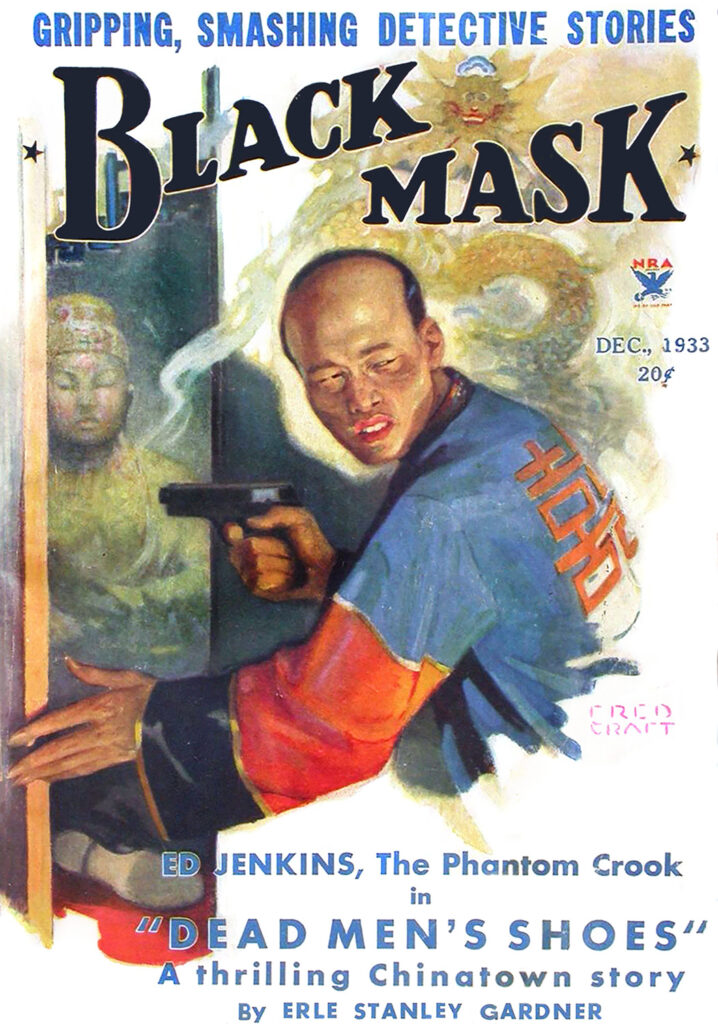 So I decided on a five years’ apprenticeship.
So I decided on a five years’ apprenticeship.
I sent the yarns out, and the postman brought ’em bade.
And then Phil C. Cody enters the picture. Phil Cody, in case you don’t know, is one of the most lovable chaps that ever had a finger in the publishing pie. He’s in charge of circulation for the Warner Publications, including Black Mask, Field & Stream, and Arts & Decoration.
Phil Cody got hold of one of my stories somewhere around the Black Mask editorial office. I think it was the first long detective story I’d ever attempted. And Phil put his comments on the bade of a sheet of memo paper. I still have that paper. It says, in part, and this, by the way, is the mild part: “…Most puerile yarn I have ever read. The plot has whiskers like unto the Spanish moss on an oak tree. The characters are stiff and wooden. They talk like dictionaries. There isn’t any suspense. The end is obvious from the beginning…”
When the editor sent me back the story, there was Phil Cody’s burst if irritation nestling inside of the yarn. The editor had been kind enough to give me a real bit of constructive criticism. It was the first I’d ever received.
Did I get mad and write the editor and Cody that my friends had read the story, and pronounced it superior to the type of blah they were publishing in their magazine?
I did not.
I sat down and retyped the yarn with Cody’s criticism in mind. It wasn’t much better when I got done with the second attempt. I wasn’t used to typewriting, and the ends of my fingers had been pounded loose from the nails. When I started the third attempt the ends of my fingers were bleeding. I had to get adhesive tape and bind them up.
The third draft of that story went on to Black Mask.
And I got a check for 160 bucks.
And that was the turning point in my career.
I’ve mentioned it in detail because of a peculiar thing that has occurred time and time again. It is this: I see attempts of beginning writers. And, almost invariably, those attempts are infinitely superior to the yarns which / first sent out. In other words those people are far better writers than I am. They have more natural talent.
But they lack the courage to stay with it. They lack the mental discipline to keep plugging and studying. I don’t know how much I’ve improved since I wrote my first stories, but I do know’ that if a majority of the people who read this article would be willing to work as hard as I did and study as hard as I did for as long a time as I did they’d be better writers than I am now. They’ve got more natural talent.
I’ve had to dig out every blessed thing I know about writing, and it’s been a hard grind. But here’s the funny part. As I got started, I became more and more enthused and fascinated. I took a keen interest in the technique of writing. I began to study reader psychology. Finally, I became so fascinated with writing that I couldn’t quit it now to save me. If the editors quit accepting my stories, or quit paying for them. I’d keep on writing just the same.
I like it.
How did I keep going on up? By slanting. Now there’s been a lot written about slanting. There have been pros and cons, but I got my stuff across by slanting. Not by slanting at the editor, but by slanting at the public. For a while I’d been a sales executive, during a period of time when I thought I’d broken away from the law business for keeps. I was associated with one of the best salesmen I ever knew, and I learned to regard everything from the sales angle.
So I figured I was a manufacturer of stories, that the magazine was the jobber, and the public the consumer. I started trying to find out what the public wanted.
I hung around newsstands, talked with dealers. I talked with steady readers. I asked questions, I tried experiments. Only recently I paid a man who was an inmate of a veteran’s hospital to pass magazines around and listen to the comments of his cronies, write down those comments and send them in.
The man was educated. He had a keen sense of fitness and of humor. His letters are among my most cherished reference notes. He gave me some priceless tips.
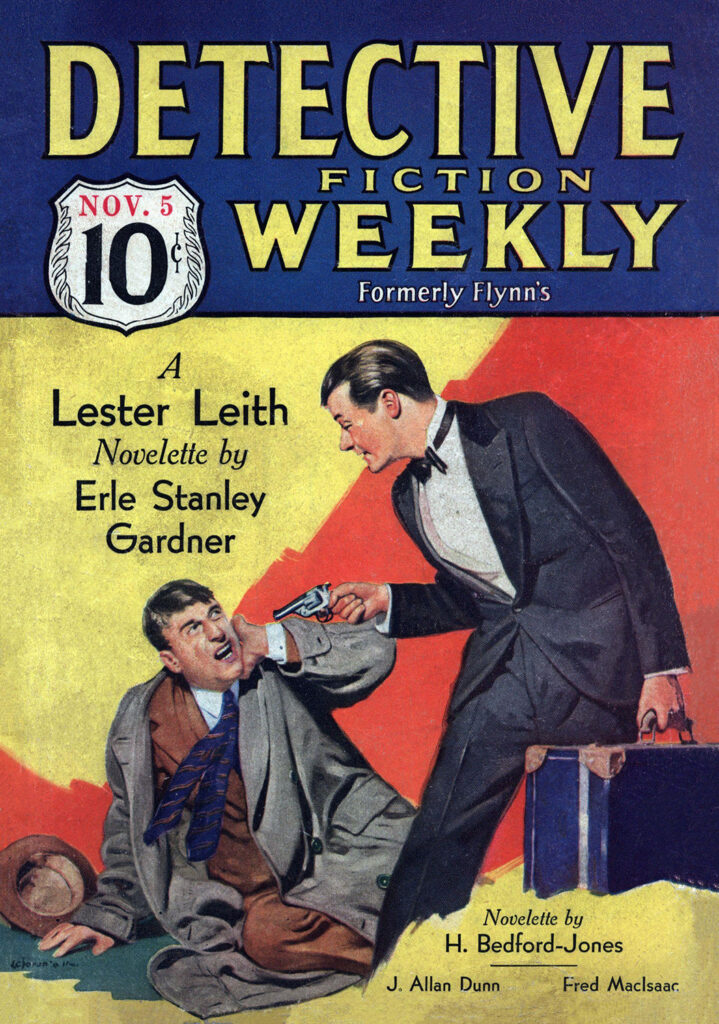 I found that there are certain psychological things which I call, for lack of a better name, “Common Denominators of Public Interest.” Read over stories that get by. It doesn’t matter whether they’re ranch-romance stories, detective stories, cowboy stories, war stories, or air stories. You’ll find that they all possess certain common denominators of interest. Separate them, classify them, and then start building stories that contain those common denominators, and see how quickly the readers react.
I found that there are certain psychological things which I call, for lack of a better name, “Common Denominators of Public Interest.” Read over stories that get by. It doesn’t matter whether they’re ranch-romance stories, detective stories, cowboy stories, war stories, or air stories. You’ll find that they all possess certain common denominators of interest. Separate them, classify them, and then start building stories that contain those common denominators, and see how quickly the readers react.
You bet it pays to slant.
But what I started to talk about was this business of throwing cold water over beginning writers just because there’s a depression on. It is true that readers have turned away from the wood pulps in droves. Why? Because of the much-advertised Depression in part. In part because the wood pulps, taken as a majority, were rotten. The readers became disgusted with them. But many of the wood pulps were never better off than they are today.
Prove it?
Oaky. Let’s be specific. Take Detective Fiction Weekly, for instance. They have continued to pay top rates and to demand consistently good material from waiters. Send them an inferior, hastily-written yarn, and what happened?
Back it came with a nice little note from the editor.
What’s happened to Detective Fiction Weekly? I got a letter from the publisher the other day. The magazine is continuing to forge ahead. Its circulation is increasing. It’s still paying the same rates that it was during the peak of prosperity.
Is it good policy?
Watch it.
It stands out like a sore thumb. Everybody’s shooting stuff at it. Their mail has increased enormously. It’s getting the pick of the stuff to choose from and the writers it wants. And that’s true, more or less, of every magazine that’s still on the stands today.
Look at Dime Detective Magazine. It was started at the peak of the Depression, if that is a proper term. It is reported to be forging ahead.
Look at the 20-cent-ers. Take Black Mask. That magazine is maintaining its quality. It is continuing to pay me good rates. The same, I believe, holds true for Clues. Argosy is published by the same company that turns out Detective Fiction Weekly. Its policies are similar, and it is enjoying an increase in circulation, if one can go by the best figures available.
These magazines are going to carry on regardless of where the bottom of the Depression is. The fact that competitive magazines are going out of business makes those properties just that much more valuable for their owners.
Let’s get right down to brass tacks and look at the thing from a dollars and cents viewpoint. During all the time I’ve been writing I’ve been doing some law work. At the start I was doing all law work save late at nights and on Sundays. I had to come home so tired I could hardly see the keys of the machine and grind out stories.
I had to write them in longhand with eyes watering from the unaccustomed strain, had to copy ’em on the machine, had to mail ’em, and usually retype ‘em a time or two. I could have used one of the stenographers at the law office, but we were so busy down there I made up my mind I would keep the fiction business entirely separated and wouldn’t use a stenographer in it until it could afford to support one.
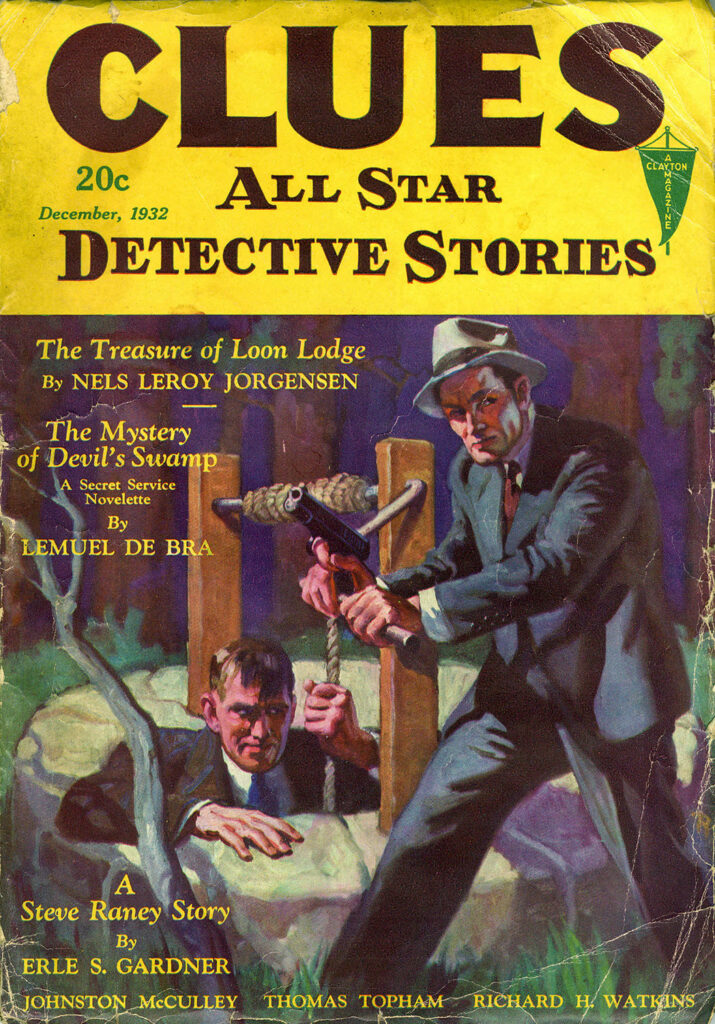 All right. The first year I wrote I made sales.
All right. The first year I wrote I made sales.
Here’s the actual income by years, solely from fiction:
| 1st year | $974.00 | ($20,440 in 2022) |
| 2nd year | $3,436.00 | ($72,107) |
| 3rd year | $5,838.15 | ($122,518) |
| 4th year | $6,627.50 | ($139,083) |
| 5th year | $9,614.25 | ($201,762) |
| 6th year | $13,612.50 | ($264,682) |
| 7th year | $14,941.00 | ($313,568) |
| 8th year | $20,525.00 | ($430,731) |
I’m not going into details for the last year or two. I’ve cited enough to show that there’s money in the game. I’ve sold a slick or two, but, for the most part, that money has been made entirely from the sale of first serial rights to wood-pulp fiction.
And I’ll say this. While collections have been slower during the last year or two, nevertheless my actual sales on which I have realized cold, hard cash, have shown a steady increase during all the time I’ve been writing. And that holds good right up to Aug. 1, 1932.
So much for the Depression.
Why am I encouraging beginners? Why don’t I try to keep down competition?
Because I know how much a word of encouragement would have meant to me during some of my blue spells. And I encourage competition because I like it. It makes all of us write better, and it makes for better wood pulps, which, in turn, makes for better rates. Any time I can’t keep pace with competition in this fiction business, I deserve to be scrapped. At that, the fiction business doesn’t owe me anything. I’m ahead of the game. I wanted to travel, and I’ve traveled.
I’ve lived in the desert in my camp wagon. I’ve cruised the Inside Passage in a 42-foot yacht. I feel as much at home in Shanghai or Hongkong as in New York City. I’ve tapped out a yarn during a typhoon on the Straits of Formosa, and been chased by pirates in the Pearl River. I’ve gone into the country of the head hunters in northern Luzon, heard the blast of sound which comes from the picture shows under the galvanized iron roofs at Zamboanga. I’ve lived in Peiping, hunted with bow and arrow in Oregon, Washington, and Alaska. I’ve associated with gangsters, patrolled beats in police radio cars, whizzed around in aeroplanes, all by way of getting local color.
And I’ve made a good living all the time I was doing it. It’s been hard work, but I like work. I’ve had my ups and downs, and I like ’em both.
To hell with a life of monotony. I want to be where I have to use my wits and where I have to work. I want adversity to struggle with and the element of the unexpected to give me a zest for life. Who wants to drift down stream on the placid current of a charted river?
I remember cruising in the waters of British Columbia when we saw an arm of the sea marked on the chart as “uncharted” with a warning that no accurate charts had ever been made of this locality because there was no data. Doubtless craft had been up it, etc., but it was filled with known and unknown dangers to navigation.
Just because it was unknown, we went out of our way to explore it. And, incidentally, encountered one of the most unique and priceless adventures of a lifetime spent dabbling around with adventure.
That’s why I like to see things moving along.
Bring on your Depressions. I like ’em.
Bring on your competition. I like it.
More power to you, brother. Come on in, the water’s fine, and don’t let calamity howlers frighten you into quitting before you know what you can do.
The majority of you writers can do better than I’m doing if you’ll buckle down and work. So come on and let’s go!
About the author
While best known for creating Perry Mason, Erle Stanley Gardner (1889-1970) was well-established in the pulps before writing the courtroom novels. By the time this article was published in October 1932, he had sold over 350 stories and novels to the pulps. His first Perry Mason novel, The Case of the Velvet Claws, would be published in 1933. By the time his 50-year writing career was over, Gardner had produced an estimated 20 million words of fiction.


